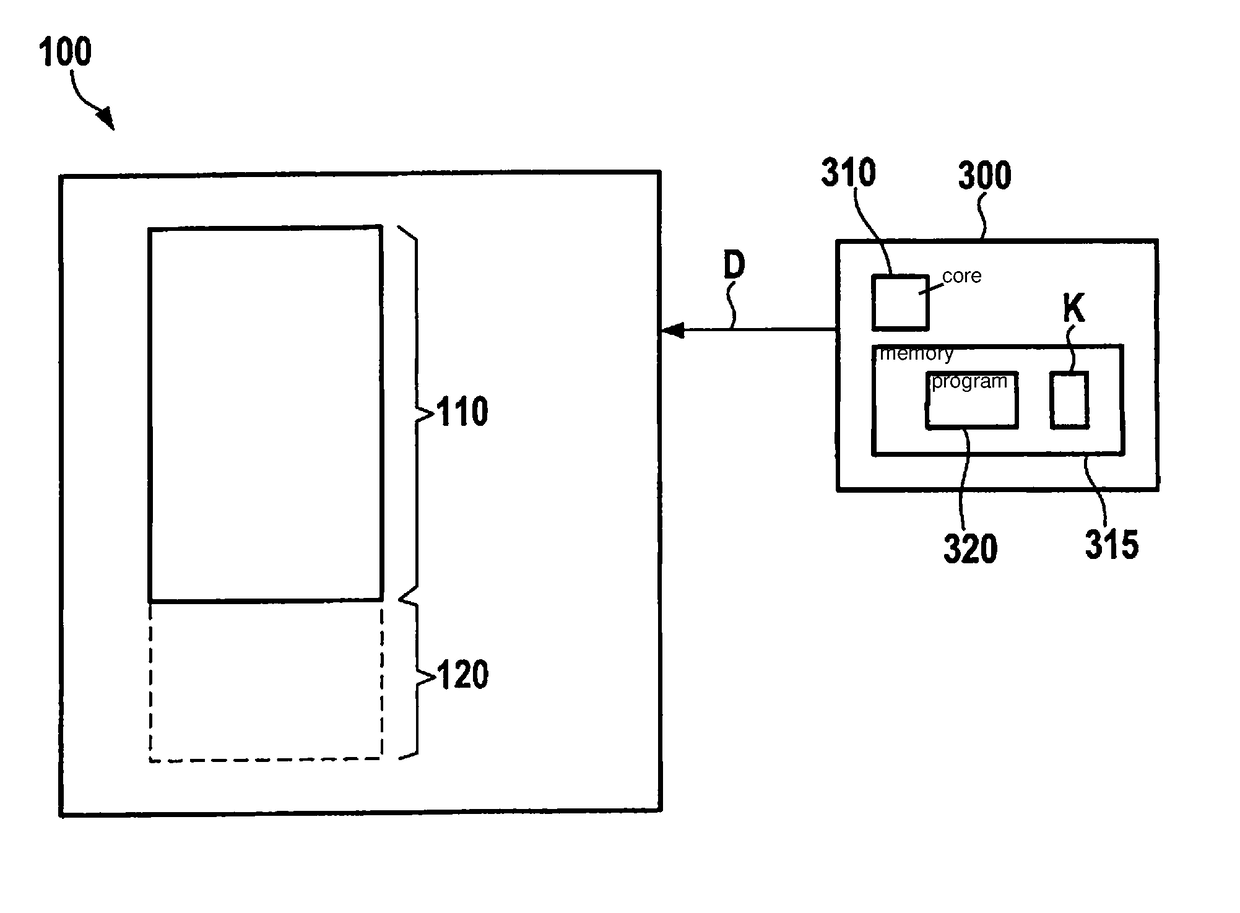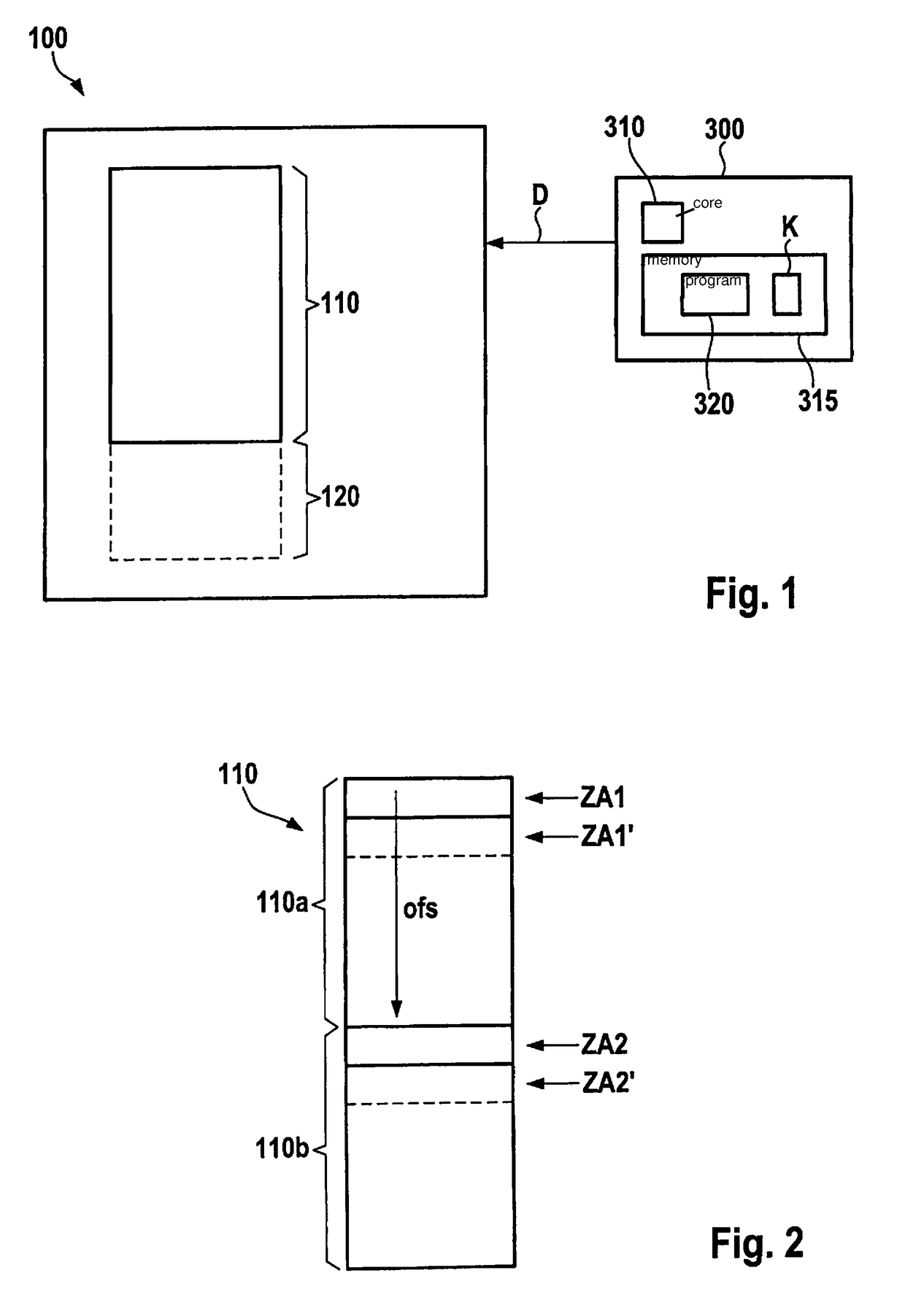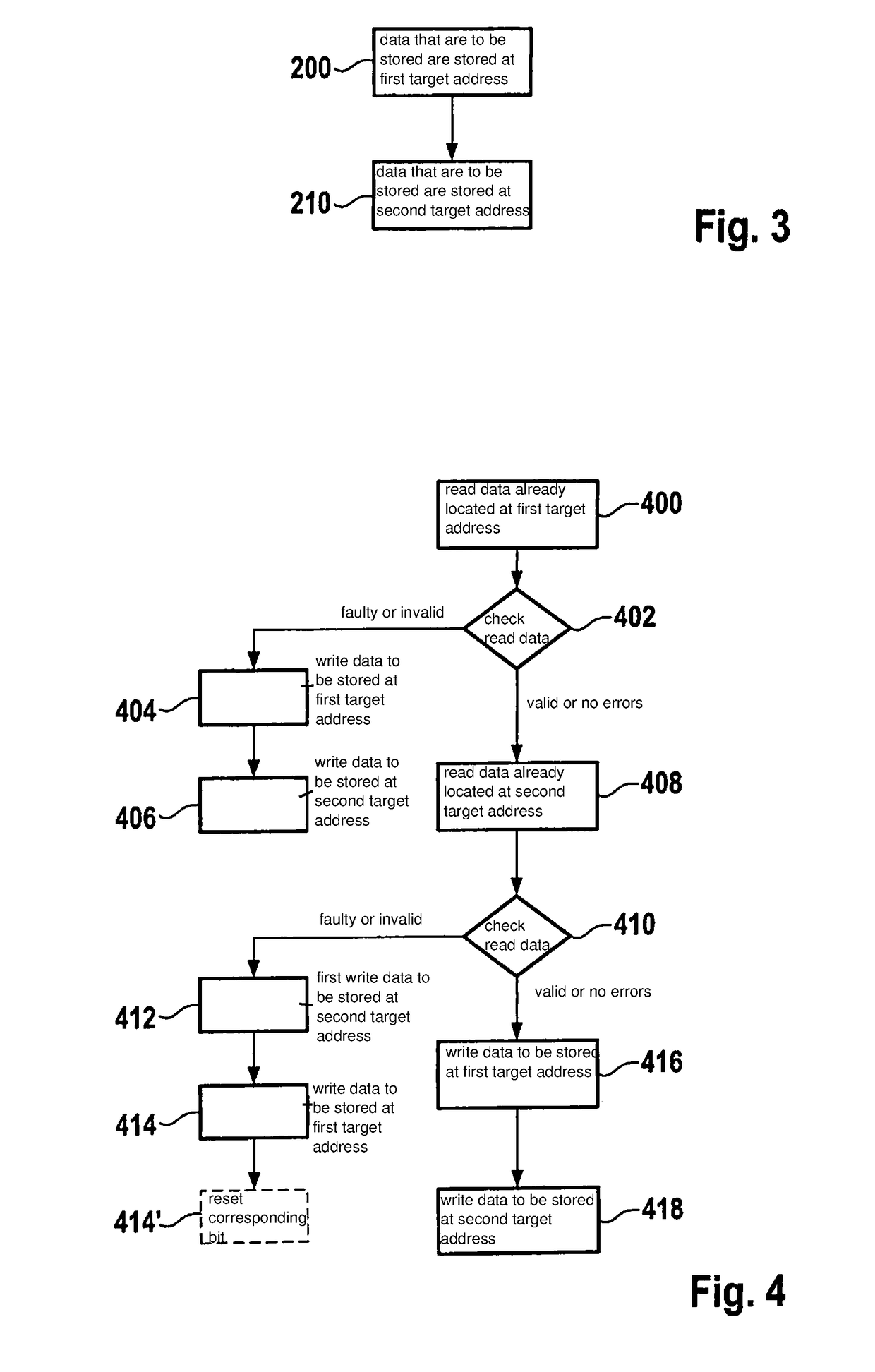Method and device for operating a memory device
a memory device and memory technology, applied in the direction of instruments, input/output to record carriers, computing, etc., to achieve the effect of increasing consumer utility and increasing flexibility
- Summary
- Abstract
- Description
- Claims
- Application Information
AI Technical Summary
Benefits of technology
Problems solved by technology
Method used
Image
Examples
Embodiment Construction
[0034]FIG. 1 schematically shows a block diagram of a memory device 100 that has one or more memory elements of the EEPROM type, not shown in FIG. 1 for clarity, defining a first memory region 110. First memory region 110 can be written with blocks of data D that are to be stored. For example, data D to be stored are supplied to memory device 100 by a device 300 explained in more detail below. In particular, data D supplied to memory device 100 can be stored in first memory region 110 using the design according to the present invention, described in more detail below.
[0035]In the present context, a writing of data in blocks is understood as the writing of at least one block of data having one or more bytes, for example 16 bytes, 32 bytes, or significantly more, such as 256 bytes. Optionally, a data block can also include additional information, for example, version information or parity information or a checksum (e.g. according to the CRC principle). In particular, a block of data i...
PUM
 Login to View More
Login to View More Abstract
Description
Claims
Application Information
 Login to View More
Login to View More - R&D
- Intellectual Property
- Life Sciences
- Materials
- Tech Scout
- Unparalleled Data Quality
- Higher Quality Content
- 60% Fewer Hallucinations
Browse by: Latest US Patents, China's latest patents, Technical Efficacy Thesaurus, Application Domain, Technology Topic, Popular Technical Reports.
© 2025 PatSnap. All rights reserved.Legal|Privacy policy|Modern Slavery Act Transparency Statement|Sitemap|About US| Contact US: help@patsnap.com



